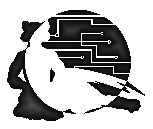Felitaur Site
Offerings
|
|
[Webscripting Homepage] | [Javascript Homepage] | [Perl/CGI HomePage]
Getting Started with PERL
on Unix
As you will eventually want to use perl to write CGI (common gateway
interface programs) you will want to write your perl programs in the right
directory.
So, assuming your home web directory is www:
- cd www
- mkdir cgi-bin
You only have to do this once
- cd cgi-bin
- pico programname.pl
This starts a text editor. Use your own
filename instead of "programname"
NOTE:For many web servers, the ending must be .cgi for it to
run as a CGI program
- for the first line (very top of the file) type:
#!/usr/bin/perl -w
- Remember, if you are not sure where perl is located, type which
perl at the command prompt BEFORE you start pico
- You may also want to check out the Cheat Sheet for mcunix students
and using UNIX and pico to
create web pages help.
- Type up your program, and then hit ctrl o [enter] to save it,
or hit ctrl x type y as you want to save changes, and then
[enter] unless you want to change the name.
- Now, you only have to do this once per file, but pico just
edits files, it does not change the permissions, and you need to tell the
OS that this IS a program, so
- type chmod a+x filename.pl where "filename" is the name of YOUR
file.
- To TEST the program without using a form, you must type the following
./filename.pl at the command prompt and hit
enter.
- Now Debug to your heart's
content.
Handy commands, bits to know
- after logging in, you need to
-
- cd www if you want to work on your web pages
- If you want to work on your perl/cgi scripts you also need to
- cd cgi-bin
- pico filename.pl will create a new file of that name, or edit an
existing file, IF you are in that directory
- ls stands for "list stuff" or the contents of a directory
- pwd or "present working directory" will show you which
directory you are in
- *****SOME QUICK HELPFUL TIPS AND SHORTCUTS*****
- Filename completion: type the command, then the first few
letters of the file (assuming you are in the right directory) then hit
tab. Example:
You are in www/cgi-bin
You type: pico ha and hit tab and you see your file pico
hash.pl show up ;)
- Use the Up arrow key to go through and redo commands so you
don't have to keep typing pico filename.pl and then
./filename.pl
|
|


